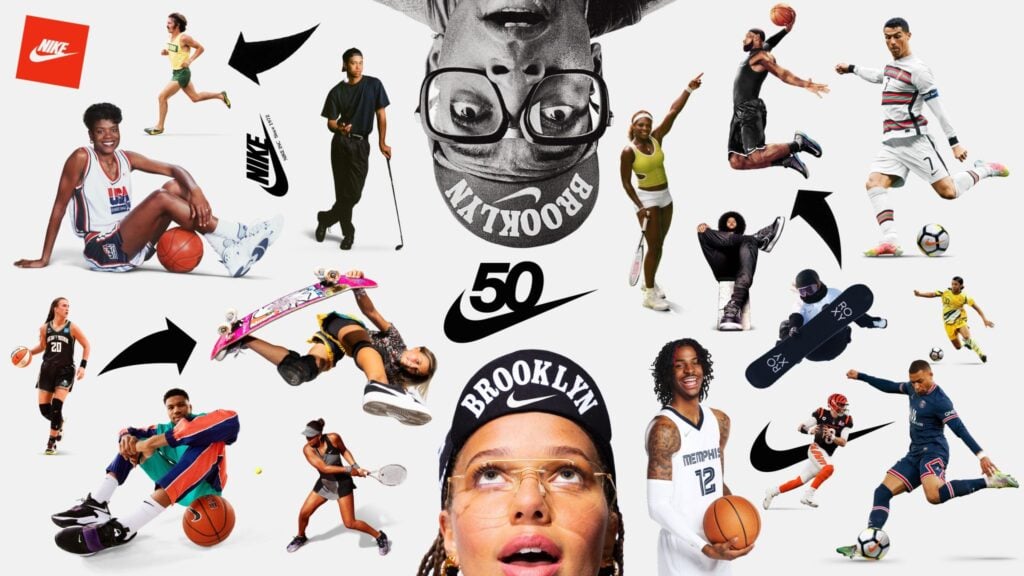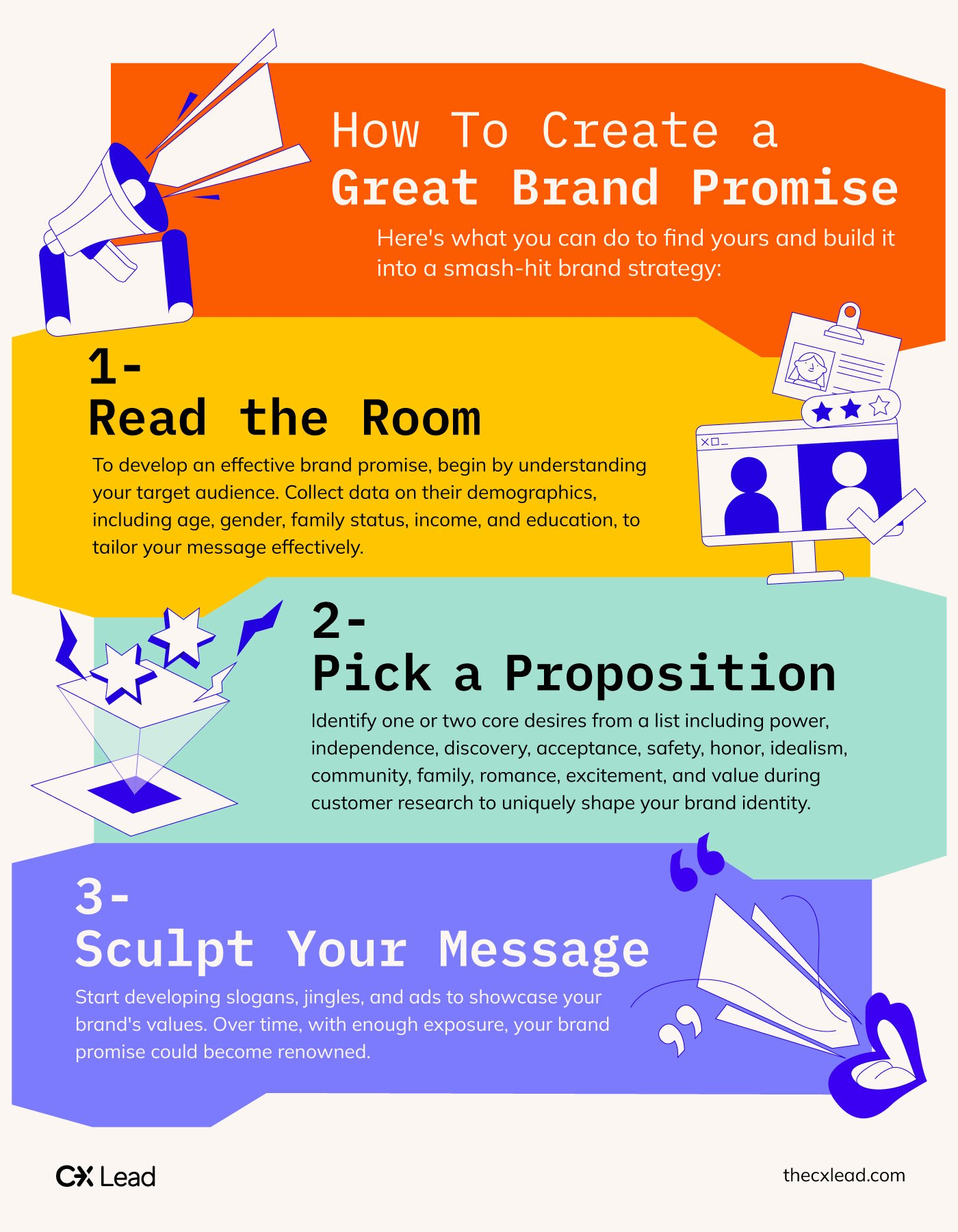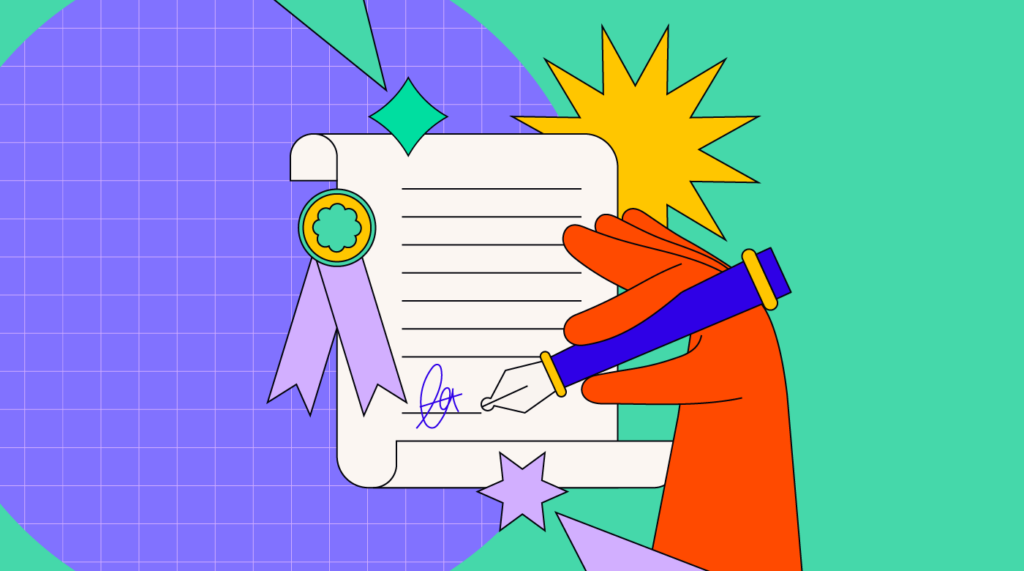When customers engage with your company, they're comparing the experience they have with several things. Consciously or subconsciously, they're comparing your company's CX to:
- The CX they expected they'd get
- The CXs they've had in similar transactions
- Their own idealized, perfect-world CX
As a CX leader in a SaaS company you know you can monitor points 2 or 3 with survey software and feedback tools, but there's not much you can do to change them. On the other hand, you do have nearly full control over 1: the CX they expected to get. Your product positioning, your brand slogan and brand promise all set the expectations against which customers ultimately gauge your company's CX.
Let's take closer look at some successful brand promises to see how they set the stage for and support better CXs.
First, What Is a Brand Promise?
Unlike a mission statement, which is a North Star for the internal organization, a brand promise is the yardstick with which customers measure their experiences with your company. Think of it as the tool you use to set customer expectations.
What Makes a Brand Promise Memorable?
First, keep it simple. Then, appeal directly to something people already think about: family, identity, place in society, money, safety and so on. Finally, try to create a community of shared values and practices around your brand.
The 15 Most Timeless Brand Promise Examples
Nothing really illuminates the concept like examples of a brand promise done right. Here's a list of 15 excellent examples of brand promises and a brief note about why they're brilliant. We've listed our favorite one close to the end.
1. BMW - "The Ultimate Driving Machine"
A good brand promise isn't afraid of some gentle stereotyping, since that's how the public often thinks. When an American car-buying public thinks about German engineering, they think about high-quality manufacturing at a high-end price. By billing itself as the benefactor giving you the ultimate driving experience, German automaker BMW effectively justifies in advance the relatively high price of their luxury cars.
2. McDonald's - "It's What You Are Familiar With"
Almost every kid in America grew up begging for McDonald's as a treat on long road trips, and the cuisine on offer there is basically the same as it's always been. The familiarity, along with the very reasonable pricing, helps make the McDonald's brand the titan it has been since the 1950s.
3. FedEx - "Peace of Mind"
When it absolutely, positively has to be a memorable brand promise, FedEx delivers. The company that used to be known as Federal Express rebranded in the 90s with a new tagline to emphasize the speed and accuracy of its logistics network, with the promise that your parcel absolutely, positively WILL get where it's going on time.
4. Nationwide Insurance - "On Your Side"
Insurance companies are not, strictly speaking, on your side, and every customer knows it. Taking that high ground, however, reassures customers on the most sensitive point most of them have about insurance: that the company will put them through the wringer if they ever file a claim.
5. GEICO - "15 Minutes or Less Can Save You 15% or More on Car Insurance"
Good brand promises are memorable, but great ones become part of the culture. When GEICO hired that lizard with an accent to tell you a partly/maybe true figure you could save by switching, people mentally did the math and started hilariously quoting the campaign at work to their friends.
6. Southwest Airlines - "Low Fares"
A brand promise doesn't have to be complicated, and it's better if it's not. "Cheap" is a great thing for airfare to be, since the point of a vacation is to get there and have fun later, not to luxuriate in the plane. With this branding, Southwest blazed a trail for today's booming discount carrier market.
7. Allstate - "You're in Good Hands"
When a competitor develops a good brand promise, you need a different one that's better. Nationwide may be on your side, but how good are they at their jobs? That's why Allstate promises you're in good hands, positioning themselves all at once as a friend, protector, and ally when you file a claim.
8. Coors Light - "The World’s Most Refreshing Beer"
Beer companies are in a tight spot based on how they're allowed to market their products. "Schlitz gets you blitzed" may be fun to say, but you really can't advertise like that. "Refreshing" is a great position for a light beer to occupy.
9. Lego - "Endless Play"

Most parents would like their children to be creative, ideally without having to buy new toys every week at $25 a pop. Lego promises endless play in endless combinations, implicitly promising parents that they might be able to get away with a bucket of pieces this Christmas, rather than a whole new toy set.
10. Apple - "Think Different"
Apple has cultivated a niche following that in some ways resembles a religious movement. Now more of a lifestyle brand than a tech brand, people camp out for its latest product drops like Grateful Dead fans, and they pay a hefty premium for that logo. "Think different" helps create a unified brand position that keeps the campers coming back to the Apple store every time.
11. Harley-Davidson - "It's Not a Motorcycle, It's a Harley"
Harley-Davidson has created a whole culture around the open road. Members of this brand family have their own uniform, way of life, and even, at least for a short time in the 1980s-'90s, a line of unfiltered cigarettes.
12. Walmart - "Save Money. Live Better."
Since 2007, Walmart has used the promise of saving money and living better, which expertly combines two very desirable value propositions. Merging the concepts of low prices and better living is a tricky game, but if you can do it, the results can be magical.
13. Coca-Cola - "Refresh the World in Mind, Body, and Spirit, and Inspire Moments of Optimism; to Create Value and Make a Difference"
Coca-Cola's brand promise is a little wordy, but the company can get away with it. As the industry leader since the late 1800s, Coca-Cola makes its brand seem new and fresh by promising to do for the whole world what you're supposed to imagine the drink doing for you: it refreshes, uplifts, and inspires.
14. Nike - "To Bring Inspiration and Innovation to Every Athlete in the World"

This is it. This one is our favorite. Putting it at the absolute end of the list would've made it too obvious. So here it is—the best brand promise, in our opinion.
Starting in 1988, when the company adopted "Just Do It" as a slogan, Nike changed marketing forever by simply skipping the question about what its products do and getting right where it needed to be. Instead of marketing a type of shoe, which could be good or bad, Nike simply cornered the idea of athletic excellence and plastered its shoes all over it. As of 2022, this brand promise has worked well enough to give Nike a dominating position and a $138.48 billion market cap.
15. Gatorade - “Sweat It to Get It”
Gatorade is on this list because it's so similar to Nike. Instead of marketing a flavored sports drink, Gatorade has marketed the idea of rewarding effort, particularly in athletics. It's a rare athlete who hasn't spilled a little Gatorade on his Nikes while winning a world championship.

How to Discover Your Brand Promise?
Your brand promise has to deliver something as part of its core offering. Here's what you can do to find yours and build it into a smash-hit brand strategy:
Step 1: Read the Room
A strong brand promise connects with people. Start your quest for a good brand promise by researching your public. Gather information about their age, sex, family status, income level, education, and anything else that helps you create a picture of the people you're trying to reach.
Step 2: Pick a Proposition
Here's a short list of things almost everyone wants at some point in life. Your customer research should guide you in picking one or two relevant ones that can apply to your brand identity, while differentiating it from the rest:
- Power/status
- Independence
- Discovery
- Acceptance
- Safety
- Honor
- Idealism
- Community
- Family
- Romance
- Excitement
- Value
Step 3: Sculpt Your Message
Start crafting slogans, jingles, ad art, and anything else your brand will use to convey its values to your target audience. In time and with enough presence, your brand promise might catch on hard enough to make it onto a list like this in the future. (Before doing this, it might be helpful to read up on the distinction between slogans and promises!)
Make Your Brand Promise Special
Are you stoked about developing your own brand promise that will stand the test of time? Good. There's more to building a successful marketing strategy than just this though. Have a look at our newsletter to learn more about building a successful brand experience, along with more insights from customer experience leaders.



